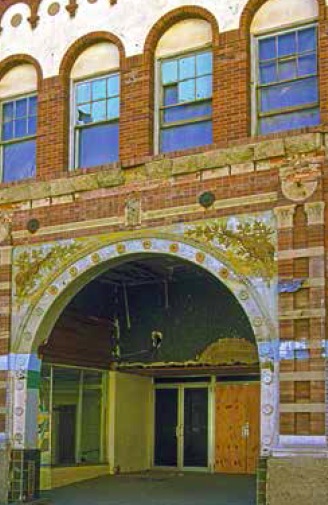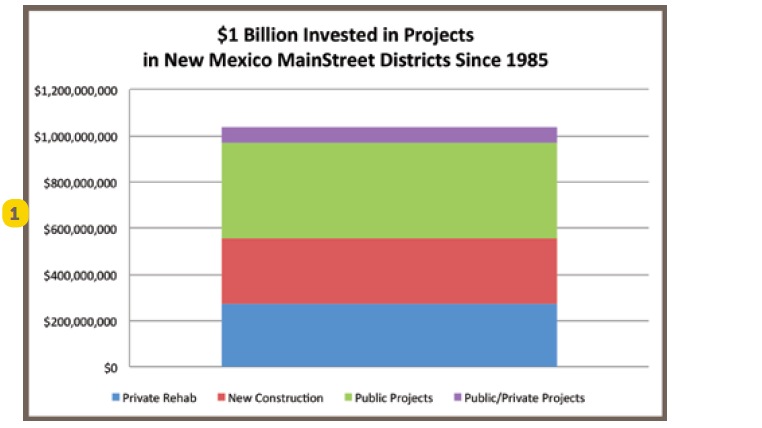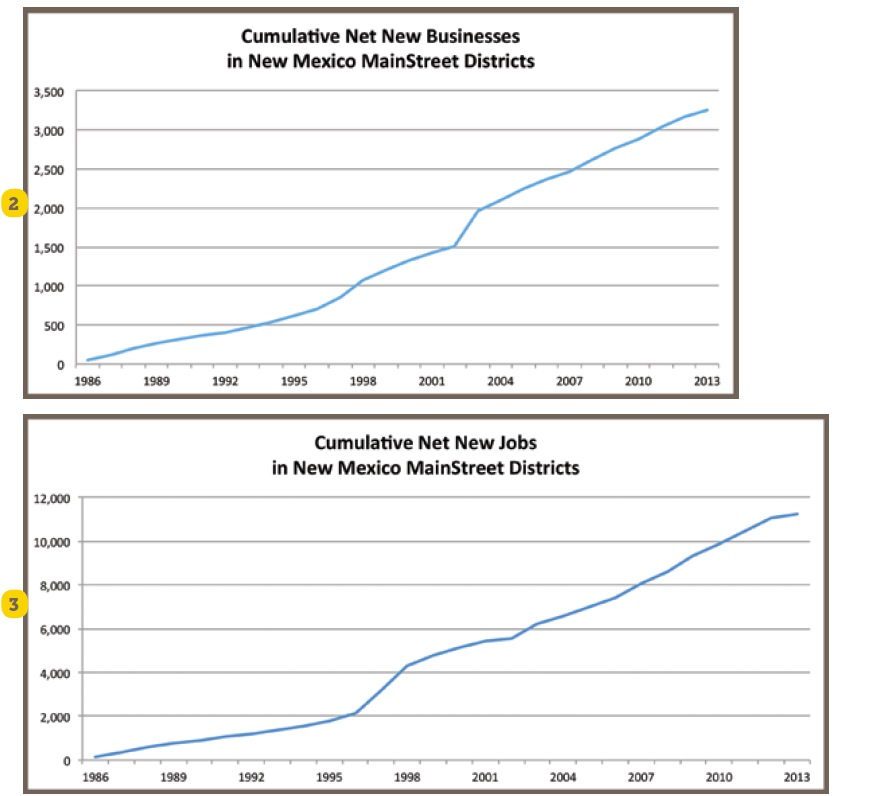PLACEECONOMICS
Executive Summary
 No other state has the tradition of New Mexico. The merging of culture, history, and character into the fabric of daily life in New Mexico is unmatched anywhere.
No other state has the tradition of New Mexico. The merging of culture, history, and character into the fabric of daily life in New Mexico is unmatched anywhere.
New Mexico MainStreet has become part of that tradition. Local, bottom-up economic development; government as a helping hand, not a hand out; volunteers committed to moving their community into the future but not forgetting its past – these are all part of the New Mexico tradition and they are central to the success of MainStreet.
And successful it has been by any measure. Since the New Mexico MainStreet program began in 1985:
- 11,400 net new jobs have been created in MainStreet districts
- Over 3,200 businesses have started up or relocated to MainStreet districts
- More than $1 billion dollars has been invested in these MainStreet districts, over half of that from the private sector
- These projects have generated an average of 430 New Mexico jobs and over $11 million in paychecks every year since New Mexico MainStreet began. In fact, the average amount of income generated each year from private sector investment in MainStreet buildings is more than the entire budget of the New Mexico MainStreet state program since its inception in 1985
- New Mexico MainStreet is cost effective economic development, costing the taxpayers $1,127 per net new job or $3,952 per net new business
- For every $1 the taxpayers of New Mexico have invested in the state MainStreet program, the private sector has invested $44.50 locally in MainStreet communities
- Conservatively, the private sector investment in MainStreet district buildings brings in an additional $5.1 million in local tax revenues each year
The Story of Main Street
Main Street is a subsidiary of the National Trust for Historic Preservation. The registered Main Street Four-Point Approach is a proven method for the economic development of downtowns in the context of historic preservation. The value and power of this approach as a vehicle for downtown revitalization has been proven in 40 states and more than 2,500 communities.
Early on, New Mexico recognized the potential for using Main Street as an economic development strategy, particularly in its rural communities, and established its state MainStreet Program in 1985. The program was housed in the Lieutenant Governor’s office until 1989 and then transferred to its current place in the Economic Development Department. Since its inception, the New Mexico MainStreet program has been extraordinarily effective in achieving its purpose. From its beginning with a few communities, the program has grown to currently serve 27 towns, cities, and urban neighborhoods.
The MainStreet program helps build the capacity of each participating community by providing technical assistance, training, and resources. New Mexico MainStreet operates with three core staff and a team of specialist consultants to help towns find solutions to revitalization challenges. The participating communities begin as “Emerging” Programs, advance to “Start-Up” Programs, and as they grow their operations and capacities, achieve State- Certified MainStreet status. The MainStreet program works with communities of all sizes, from rural small towns such as Clayton (population 2,980) to urban commercial districts in Albuquerque and Las Cruces.
New Mexico MainStreet districts are locally organized, run, and funded. These self-supporting programs are independent non-profits or city agencies that raise money to hire a MainStreet executive director and fund their operations. They rely on many volunteers and a board of directors to carry out their goals.
Download full version (PDF): The Impacts of MainStreet
About PlaceEconomics
www.placeeconomics.com
“PlaceEconomics is a private sector firm with extensive experience in the measurement of the economic impacts of historic preservation. For over twenty-five years the client base of the firm has been public and non-profit sector clients who are addressing issues of downtown and neighborhood commercial district revitalization and the reuse of historic buildings.”
Tags: MainStreet, National Trust for Historic Preservation, New Mexico, NM, PlaceEconomics








 RSS Feed
RSS Feed